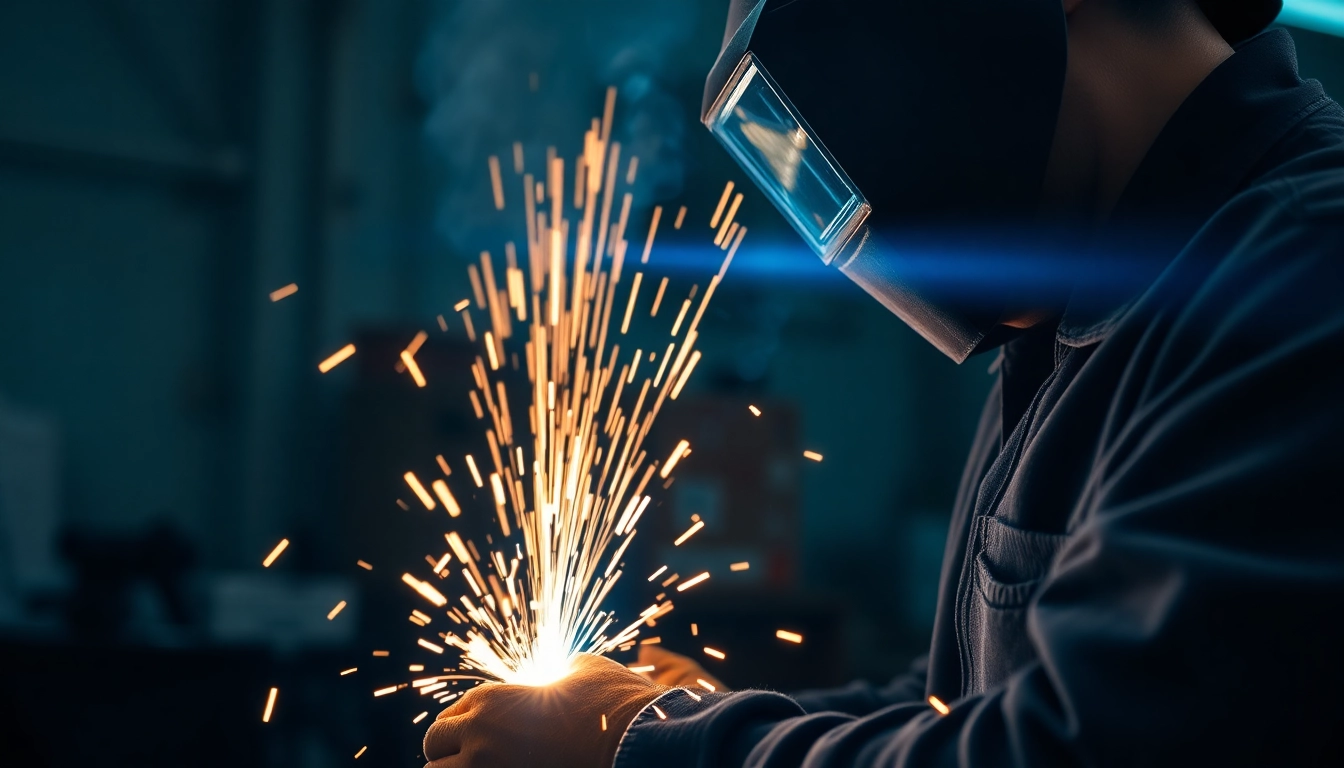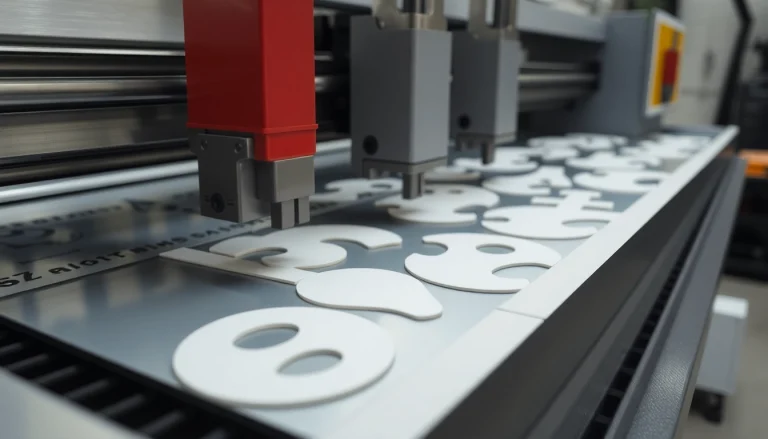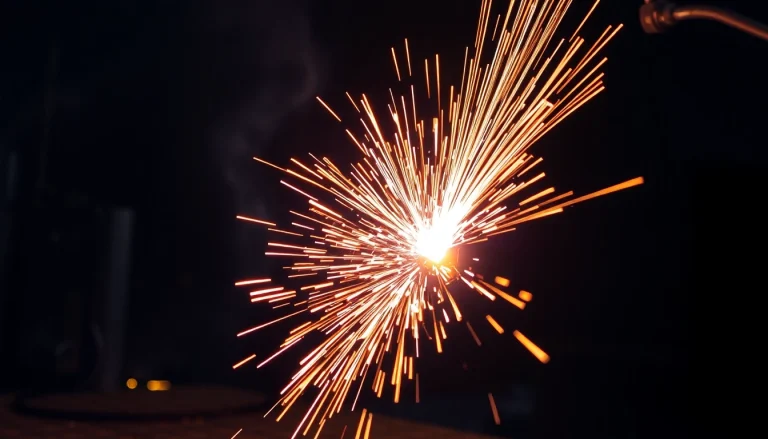Introduction to AC DC TIG Welders
Tungsten Inert Gas (TIG) welding, known for its precision and ability to be used on a wide variety of metals, is a popular choice among welders. One of the most versatile tools in a welder’s arsenal is the ac dc tig welder. This type of welder operates on both alternating current (AC) and direct current (DC), offering unprecedented flexibility for various welding tasks. Understanding what makes AC DC TIG welders unique, their benefits, and how to select the right one can significantly enhance your welding projects.
Understanding the Basics of TIG Welding
TIG welding utilizes a non-consumable tungsten electrode to produce the weld. Unlike other methods, it provides a high level of control, making it ideal for intricate and high-quality welds. The process involves creating an arc between the tungsten electrode and the workpiece, which melts the base metal and a filler rod (if used). The inert gas protects the weld area from contamination during the process.
The advent of AC DC capabilities in TIG welding has opened up new possibilities. AC is predominantly used for welding aluminum and magnesium, as it can clean the oxide layer off these metals, allowing for better penetration and overall weld quality. DC, on the other hand, is excellent for materials like steel and stainless steel, providing a more stable arc and cleaner finish. Therefore, having a welder that can switch between these two currents offers significant advantages.
Benefits of Using AC DC TIG Welders
AC DC TIG welders are favored for their versatility, but the benefits go beyond just the ability to switch currents. Here are several compelling reasons to consider these machines:
- Versatility: AC DC welders can handle a broader range of materials, accommodating different thicknesses and types of metals, including aluminum, stainless steel, and copper.
- Enhanced Control: TIG welding offers better control over the heat input and can be adjusted according to the needs of the specific welding task, reducing the risk of warping or distortion.
- Superior Weld Quality: With the ability to create strong, clean welds with minimal cleanup, these welders are preferred for applications requiring aesthetics as well as strength.
- Greater Penetration: AC allows for cleaning of aluminum oxide layers, enhancing penetration and bonding strength in welds.
- Long-Term Investment: While AC DC TIG welders may have a higher upfront cost compared to their DC only counterparts, their versatility can lead to cost savings in the long run by eliminating the need for multiple machines.
How to Choose the Right Welder for Your Needs
Selecting the right AC DC TIG welder involves considering various factors, including your experience, the types of materials you’ll be working with, and specific project requirements. Here are some key points to ponder:
- Welding Material: If your primary focus is on aluminum or magnesium, ensure the welder has strong AC capabilities. For steel or stainless steel, a well-performing DC setting is crucial.
- Amperage Requirement: Consider the thickness of metal you’ll be welding. Higher amperage welders generally allow for thicker materials; typically, 200 amps is sufficient for most applications.
- Portability: If you need to move your welder frequently, opt for a lightweight model with a compact design.
- Duty Cycle: This indicates how long a welder can operate continuously without overheating. A higher duty cycle (60% or above) is preferable for professional settings.
- Advanced Features: Look for features like pulse settings, programmable settings, and ease of control that can enhance your welding experience.
Key Features of AC DC TIG Welders
Power and Performance Factors
The performance of an AC DC TIG welder is primarily determined by its power output and efficiency. Understanding these aspects can help you choose a model that meets your project demands. The power output is usually measured in amps and dictates the thickness of materials you can effectively weld. For instance, an AC DC TIG welder with a 250 amp rating typically can weld materials up to 1/4 inch thick or more, depending on the type of metal.
Additionally, the duty cycle is crucial. This is expressed as a percentage of a 10-minute period during which a welder can operate continuously. A 60% duty cycle means the welder can work for six minutes before needing a four-minute cooldown. For heavy-duty applications, look for welders with at least a 70% to 80% duty cycle.
Control Settings and Versatility
A significant advantage of AC DC TIG welders is their ability to provide precise control over the welding process. Many models offer adjustable control settings that allow you to fine-tune parameters such as the current, frequency of AC output, and gas flow rates. This versatility enables welders to adapt to different welding situations and achieve optimal results.
Modern AC DC TIG welders often come equipped with features like digital displays and memory settings, which allow welders to save their preferred settings for specific projects. Some advanced models even come with foot pedals that enable the welder to adjust the current dynamically while welding, giving them hands-free control over the process.
Durability and Build Quality
A high-quality welder’s durability is essential, especially for professionals who rely on their equipment daily. Look for AC DC TIG welders made from robust materials that can withstand the wear and tear of frequent use. Key aspects to consider include:
- Housing Material: Aluminum or heavy-duty plastics are ideal as they provide a good balance between weight and durability.
- Cooling Systems: Effective cooling mechanisms, such as built-in fans, help maintain optimal operating temperatures, extending the life of the welder.
- Warranty: A solid warranty indicates the manufacturer’s confidence in the product’s durability—generally, a warranty of three to five years is a positive sign.
Popular AC DC TIG Welders on the Market
Top Brands and Models Overview
The market for AC DC TIG welders is competitive, with several trusted brands leading the way. Here are some of the top brands:
- Miller Electric: Known for high-quality plasma cutters and welders, their Miller Syncrowave line offers robust AC/DC options suitable for both professional and hobbyist welders.
- Lincoln Electric: Their TIG welders, such as the Lincoln Square Wave TIG 200, are praised for features like intuitive user interfaces and reliability.
- Everlast: A rising option in the market, their welders often balance affordability with a rich feature set, such as the Everlast PowerTIG series.
- Eastwood: Recognized for great value, their AC/DC welders like the Eastwood TIG 200 provide solid performance without the premium price tag.
Comparative Analysis of Features and Prices
When comparing several AC DC TIG welders, it’s essential to consider features versus the price. Prices can range from $500 to over $3000, depending on the model and brand.
For example, the Miller Syncrowave 210 retails for approximately $1,600 and is known for its reliability and robust feature set. In contrast, the Everlast PowerTIG 200 costs around $1,000 and offers excellent value for hobbyists and part-time professionals.
In terms of features, while some models come equipped with advanced technology like adjustable AC frequency and pulse width control, others may focus on delivering a high-quality basic performance at a lower price. Ultimately, understanding how these features affect your specific welding needs is crucial for making an informed purchase.
User Reviews and Feedback
User feedback provides valuable insights into the actual performance and reliability of AC DC TIG welders. Many welders report satisfaction with brands like Lincoln Electric and Miller, often commending their build quality and dependable performance. Common concerns within reviews may include the initial learning curve associated with setting up the machine and using advanced features effectively.
Forums and online communities, particularly dedicated welding subreddits, frequently discuss various models, offering personal recommendations and tips for newcomers. Reviews often highlight the importance of service and warranty support from manufacturers, which can significantly impact the user experience.
Common Applications for AC DC TIG Welding
TIG Welding of Aluminum and Steel
One of the most common applications of AC DC TIG welding is in fabricating aluminum structures. The use of AC allows for thorough cleaning of the aluminum oxide layer, essential for creating strong welds. Aluminum is found in various industries, from automotive to aerospace, illustrating its widespread use.
DC welding is predominantly used for steel and stainless steel applications. This method provides a stable arc and consistent penetration, crucial for structural applications where integrity is key. In both cases, understanding the properties of the materials and how they respond to AC versus DC is vital for success.
Applications in Automotive and Aerospace Industries
The automotive and aerospace sectors are two major industries where AC DC TIG welding techniques see extensive application. Here, precision is paramount. In automotive bodywork and repair, TIG welding is utilized to join thin sheets of steel and aluminum without burn-through, allowing for smooth, aesthetically pleasing finishes.
Artistic Uses of TIG Welding
Beyond industrial applications, TIG welding also finds its place in artistic endeavors. Artists and sculptors use TIG welders to create intricate metal sculptures and art pieces. The high precision and control that TIG welding provides allow for detailed work and the ability to create seamless transitions between diverse materials, such as combining stainless steel and aluminum.
Artists can manipulate the weld puddle with skill, creating visually stunning effects and guaranteeing aesthetic quality. In these contexts, the welder’s versatility in switching between AC and DC adds significant value, enhancing creative expression.
Best Practices for Using AC DC TIG Welders
Safety Measures Every Welder Should Follow
Safety should always be a priority when welding. Here are essential safety measures to follow:
- Protective Gear: Always wear safety glasses, gloves, and a welding helmet with appropriate shading to safeguard against UV rays.
- Ventilation: Ensure your workspace is well-ventilated to avoid inhaling harmful fumes produced during welding.
- Fire Safety: Have fire extinguishing materials readily available, especially when working with flammable materials or in confined spaces.
- Electrical Safety: Regularly inspect your welding equipment for any frayed wires and ensure that the welder is grounded to mitigate the risk of electrical shock.
Tips for Maintaining Your TIG Welder
Proper maintenance extends the life and efficiency of your AC DC TIG welder. Here are some tips:
- Regular Cleaning: After each use, clean the torch and other parts to remove impurities, which can affect performance.
- Check Connections: Regularly inspect and tighten all electrical connections to ensure optimal performance and safety.
- Replace Wearable Parts: Keep an eye on tungsten electrodes, nozzles, and collets for wear and replace them as needed to maintain quality welds.
Techniques to Improve Your Welding Skills
Whether you’re a novice or an experienced welder, there are always ways to enhance your skills:
- Practice Different Materials: Experiment with various metals to understand how different settings affect welding quality.
- Fine-Tune Settings: Spend time learning how different settings impact the arc and penetration.
- Seek Feedback: Join welding forums or groups where you can have your work critiqued or gain insights from others.
- Take Classes: Formal welding classes can provide structured learning opportunities and personalized feedback.






